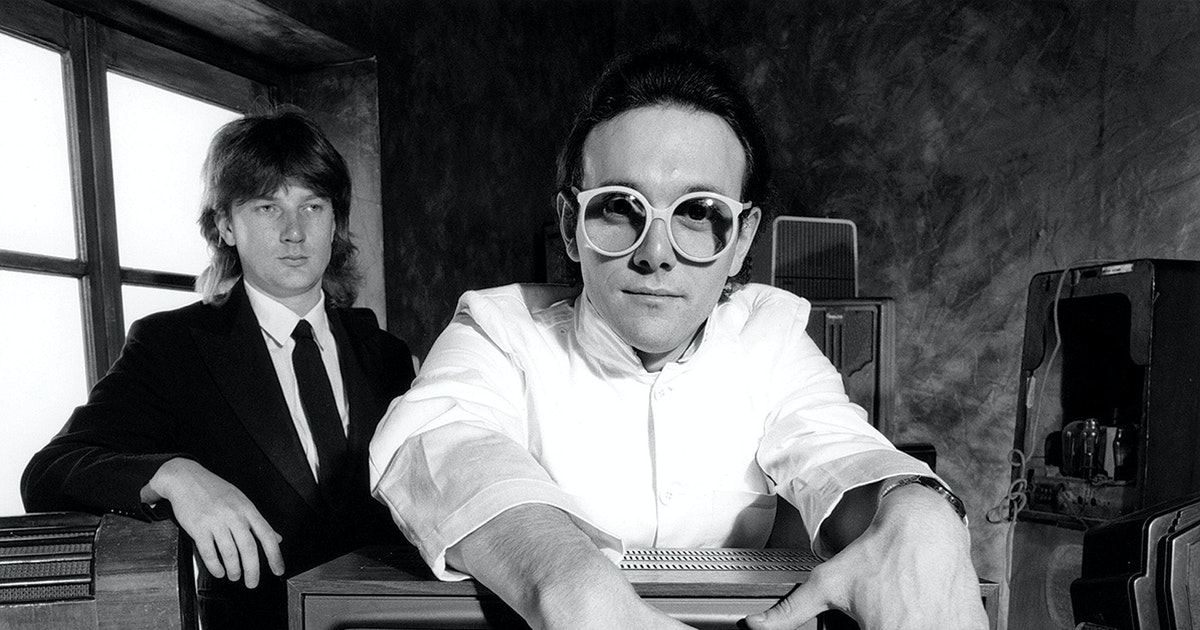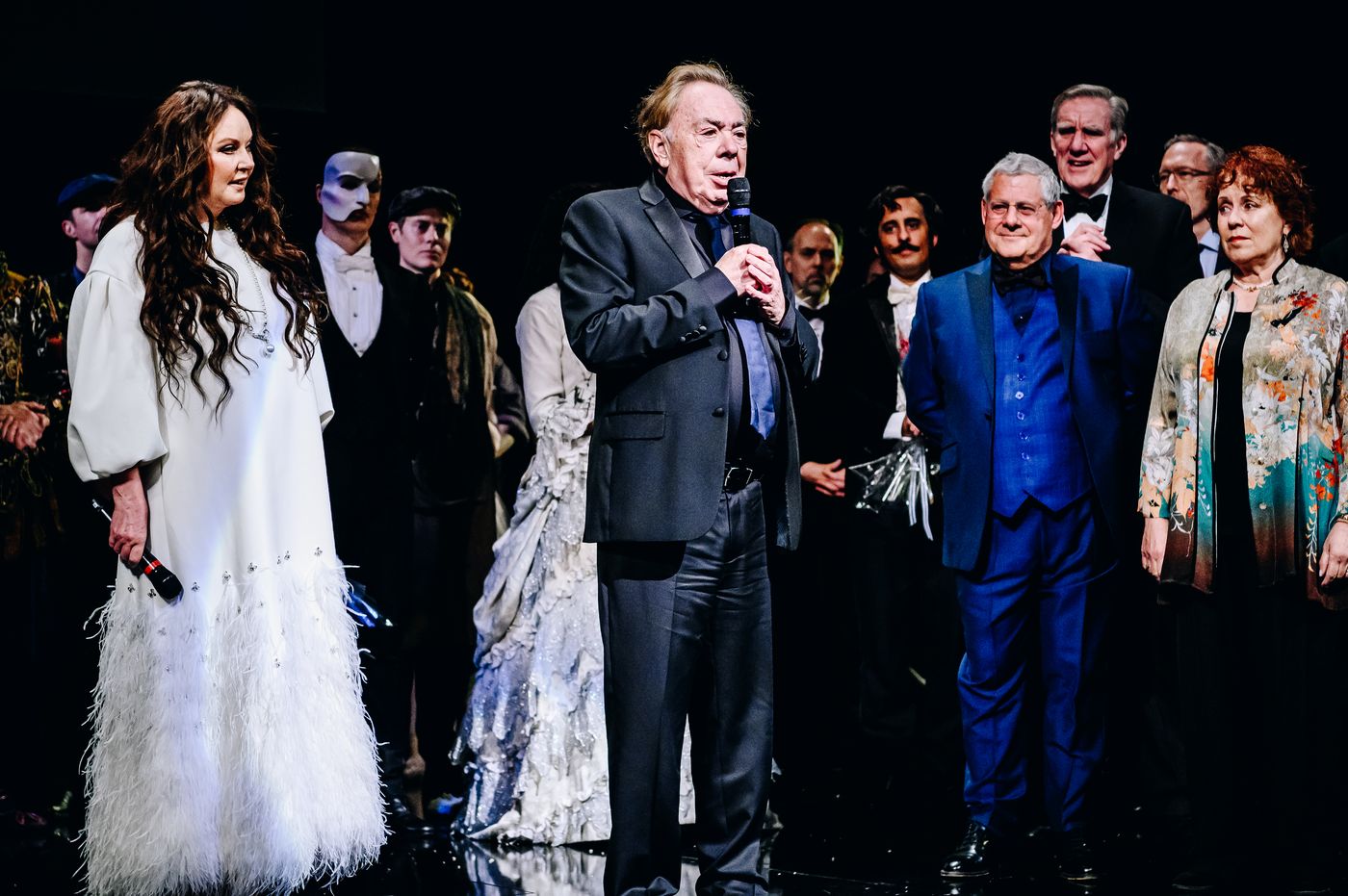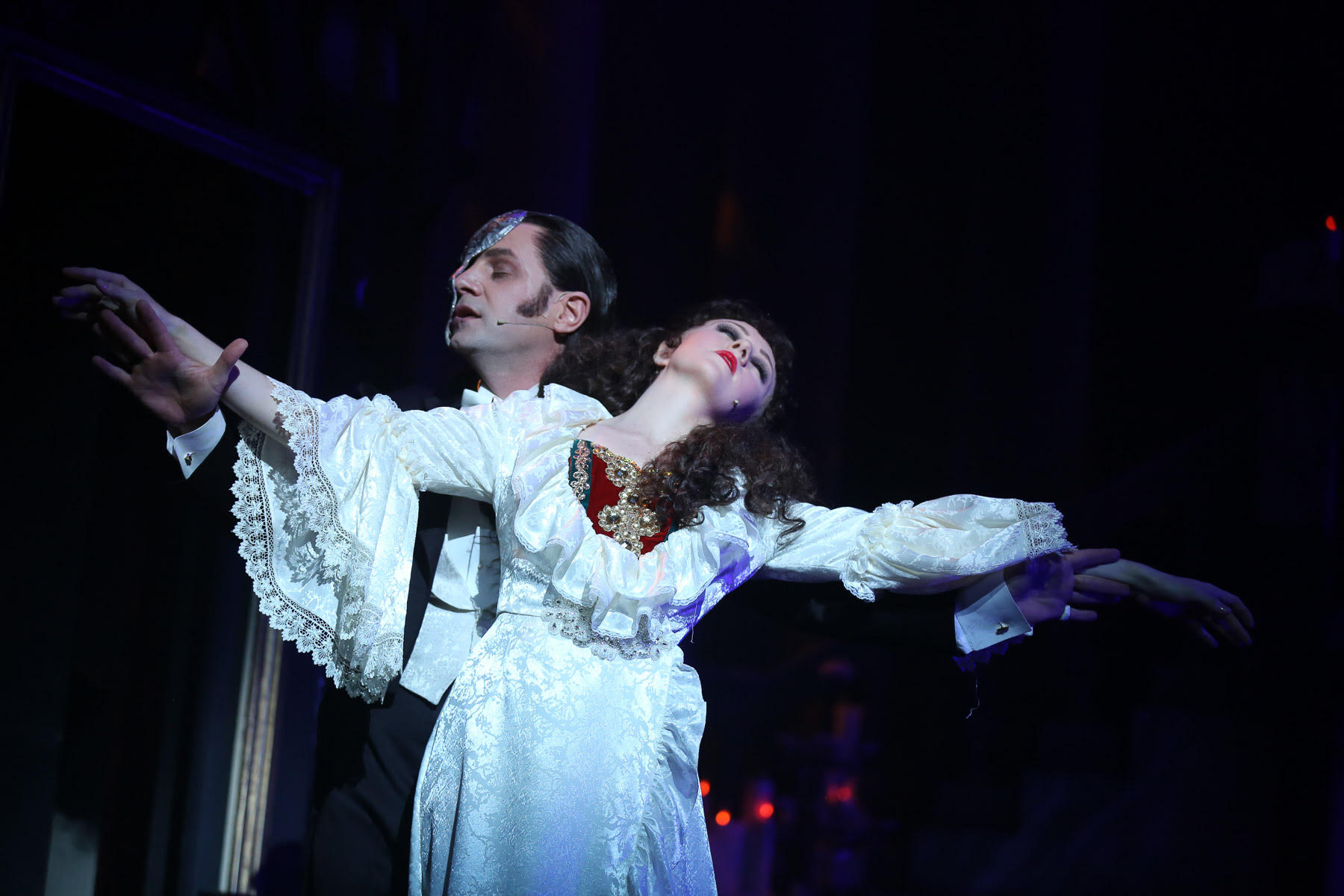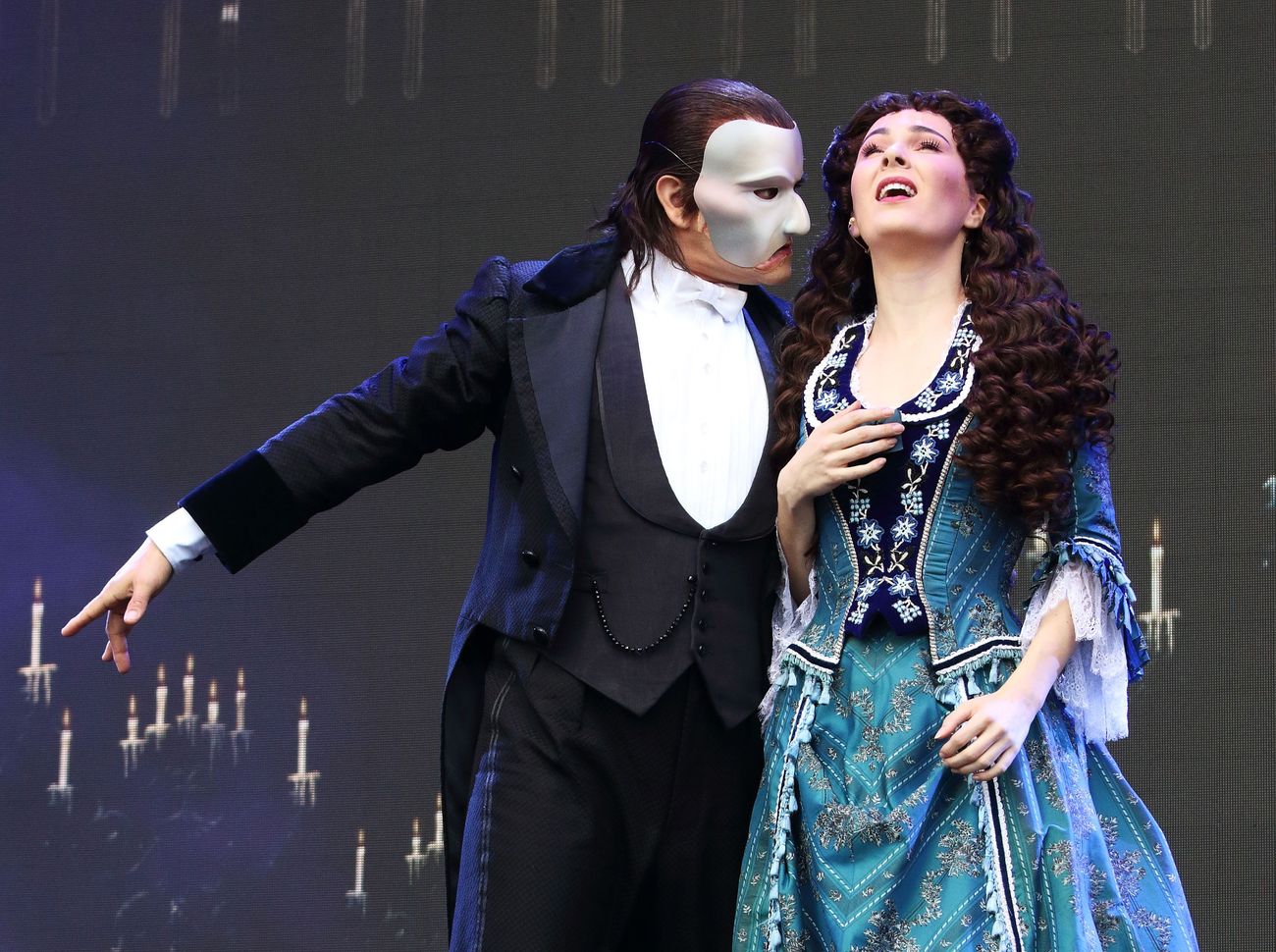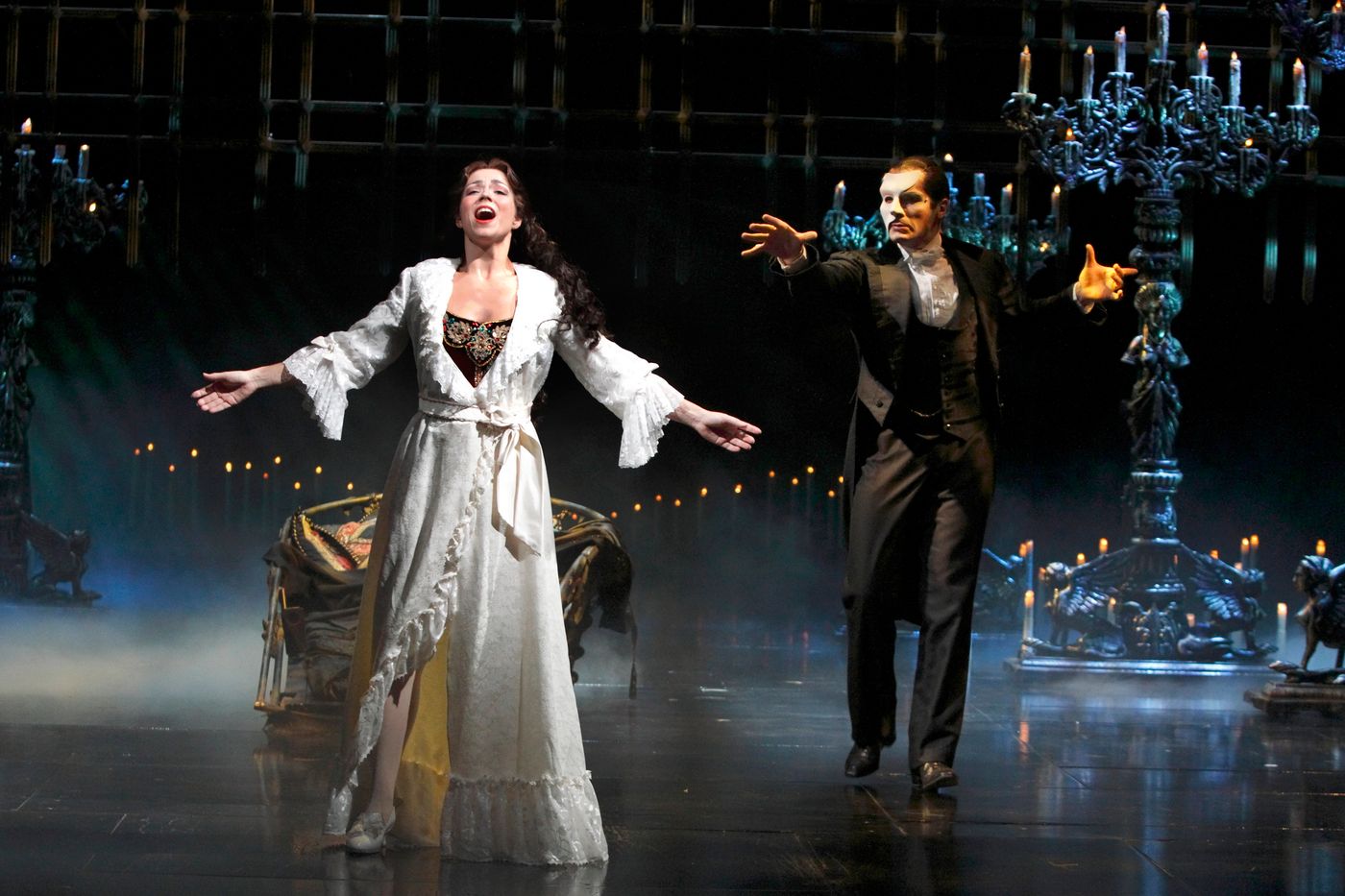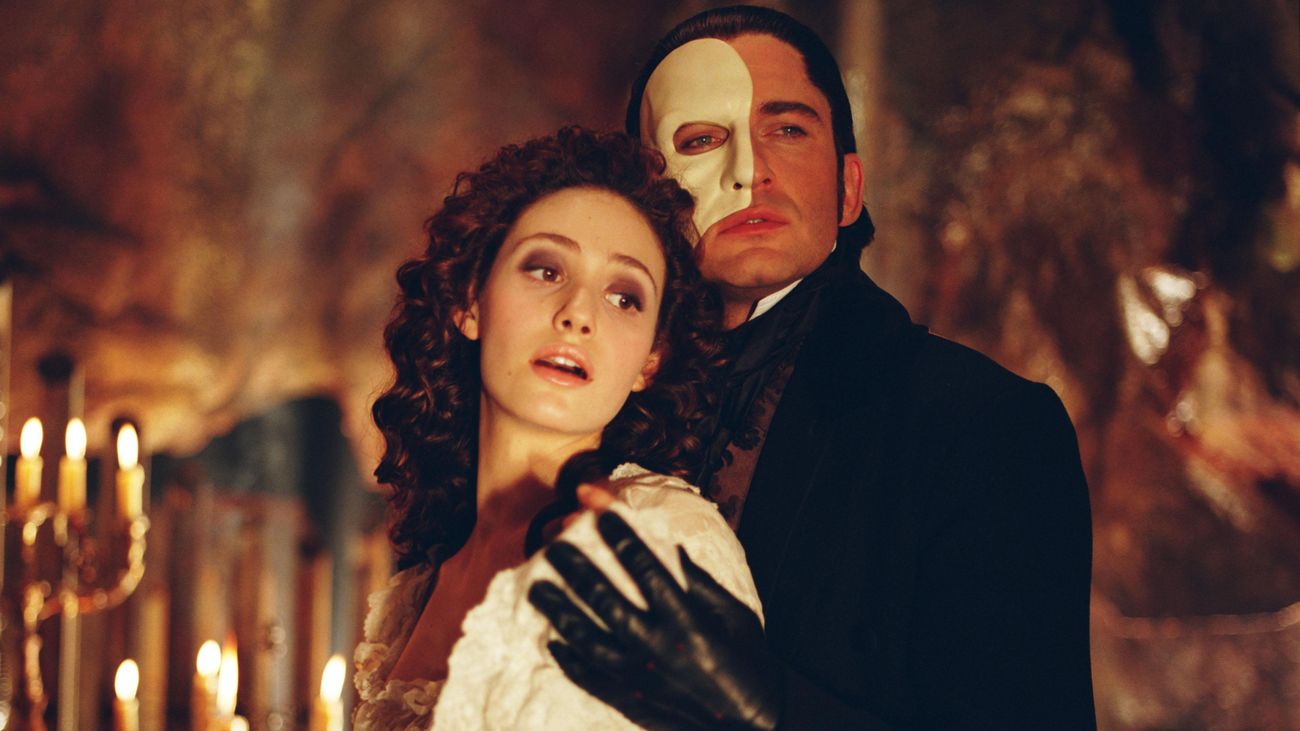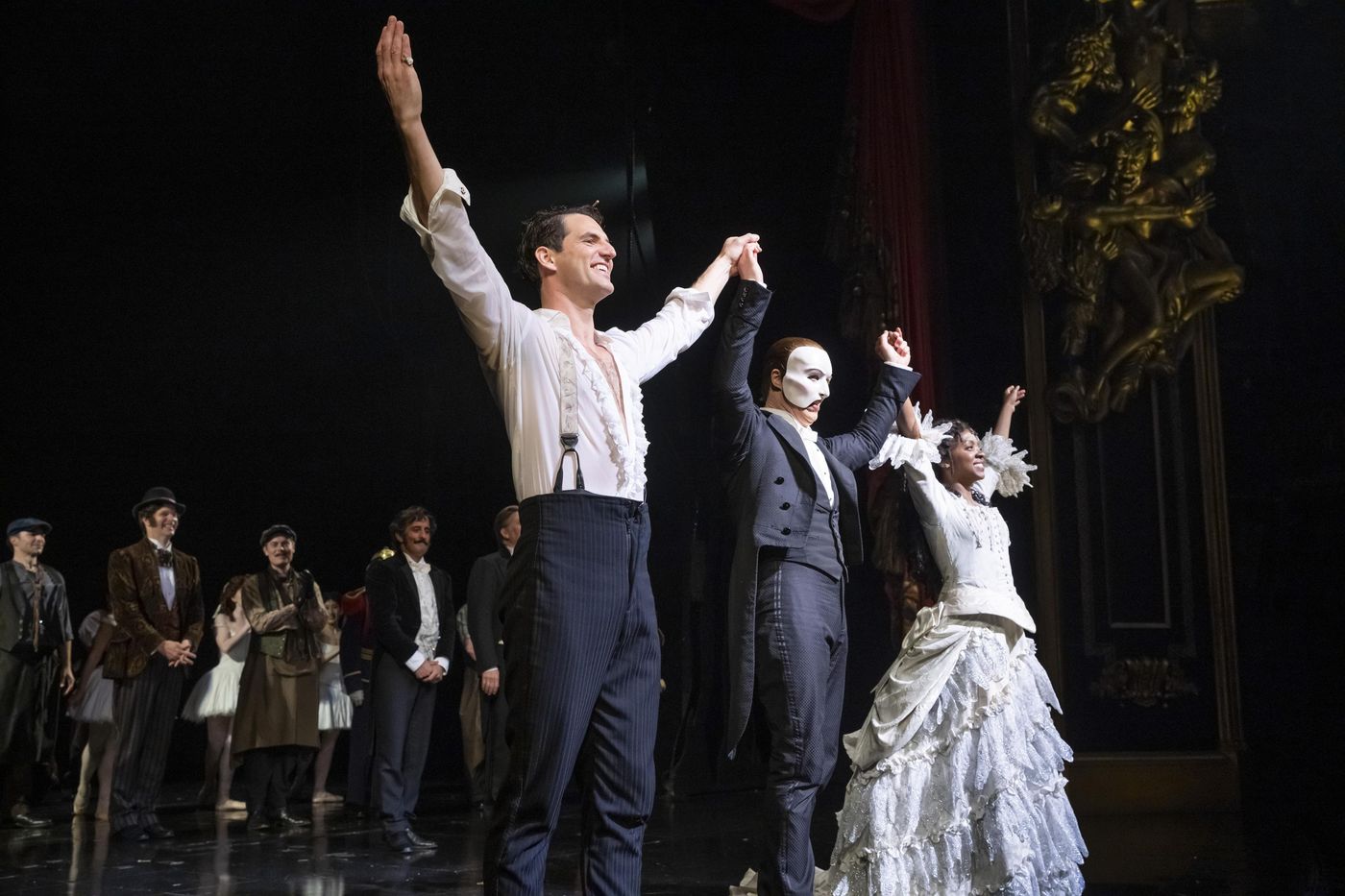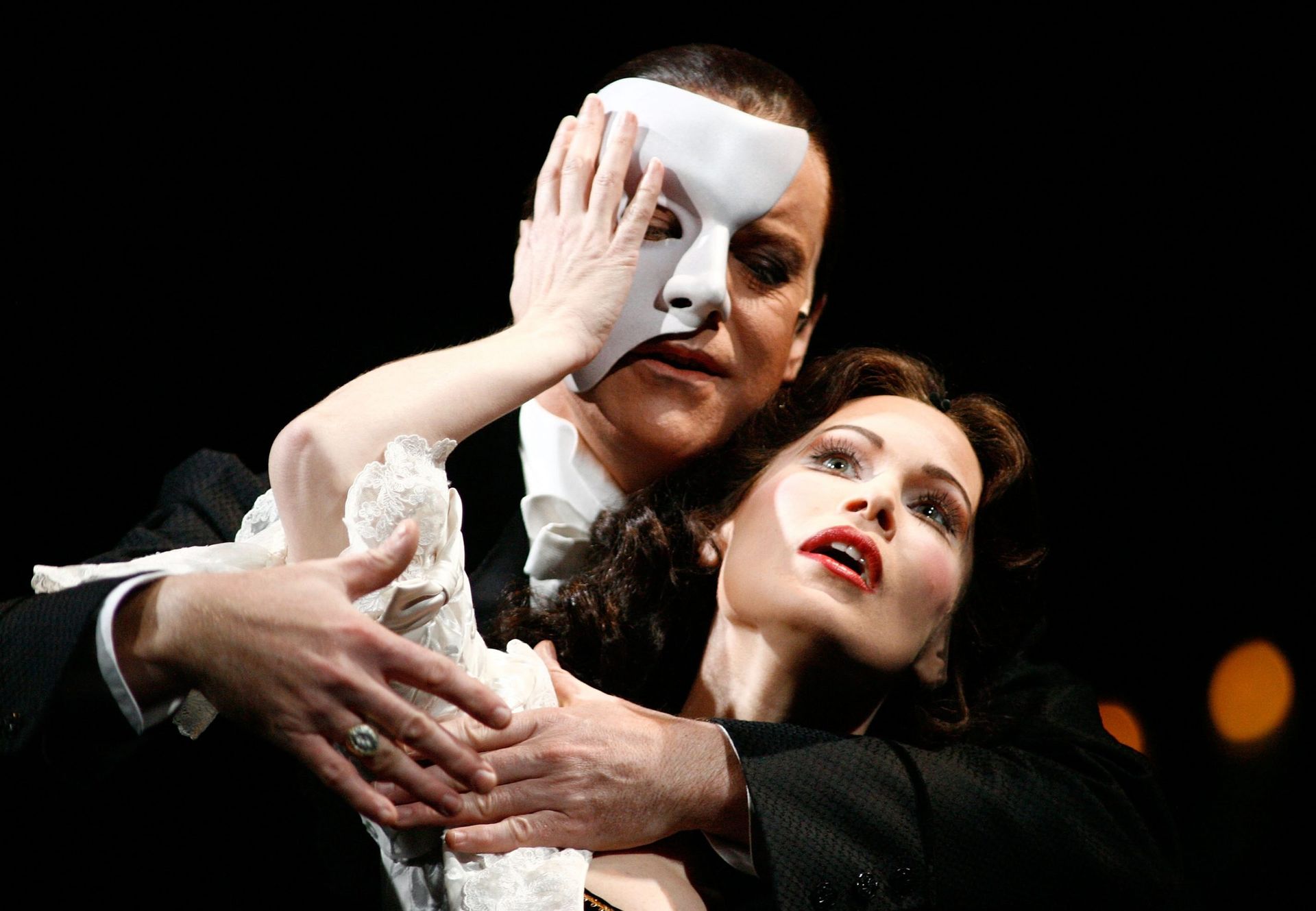Home>Events & Info>Opera>What Year Did Phantom Of The Opera Come Out


Opera
What Year Did Phantom Of The Opera Come Out
Modified: January 22, 2024
Find out the year when the classic musical, Phantom of the Opera, made its debut on stage. Immerse yourself in this timeless opera that continues to captivate audiences.
(Many of the links in this article redirect to a specific reviewed product. Your purchase of these products through affiliate links helps to generate commission for AudioLover.com, at no extra cost. Learn more)
Table of Contents
Introduction
Welcome to a journey into the captivating world of “Phantom of the Opera”! This iconic musical has enthralled audiences around the globe for decades, taking them on a spellbinding adventure filled with love, mystery, and unbridled passion. In this article, we will delve into the fascinating history of “Phantom of the Opera” and explore the impact it has had on the world of entertainment.
First premiering on the West End in London in 1986, “Phantom of the Opera” quickly captured the hearts of theatergoers and solidified its place as one of the most beloved musicals of all time. With its enchanting melodies, breathtaking set designs, and a compelling storyline that weaves romance, tragedy, and suspense, the show continues to dazzle audiences to this day.
Created by the brilliant minds of composer Andrew Lloyd Webber, lyricist Charles Hart, and writer Richard Stilgoe, “Phantom of the Opera” is based on the classic novel written by French author Gaston Leroux. Leroux’s novel, first published in 1910, tells the haunting tale of a deformed musical genius who resides in the depths of the Paris Opera House, secretly guiding the career of a young and talented soprano.
The enduring appeal of “Phantom of the Opera” lies in its ability to transport audiences into a world of fantasy and intrigue. From the opulent opera house settings to the breathtaking musical numbers, the production creates a mesmerizing experience that leaves a lasting impression on all who witness it.
Throughout the years, “Phantom of the Opera” has become a cultural phenomenon, captivating audiences across international boundaries. It has been translated into multiple languages and has been performed in theaters worldwide, from Broadway in New York to the Sydney Opera House, captivating millions of fans across the globe.
In the following sections, we will delve deeper into the history of “Phantom of the Opera,” explore its inception, and examine the impact it has had on the world of musical theater. Join us as we unveil the enchanting story behind this timeless masterpiece, and discover why it continues to captivate the imagination of audiences everywhere.
Brief History of “Phantom of the Opera”
The tale of “Phantom of the Opera” traces its roots back to the early 20th century, with the publication of Gaston Leroux’s novel in 1910. Leroux’s gripping story of a disfigured musical genius haunting the Paris Opera House captured the imagination of readers around the world, setting the stage for its eventual adaptation into one of the most successful musical productions of all time.
It wasn’t until the mid-1980s that “Phantom of the Opera” found its way onto the stage, with the visionary composer Andrew Lloyd Webber at the helm. Collaborating with lyricist Charles Hart and writer Richard Stilgoe, Webber transformed Leroux’s haunting tale into a theatrical masterpiece.
The musical made its world premiere at Her Majesty’s Theatre in London’s West End on October 9, 1986. With its lush orchestrations, stunning costumes, and mesmerizing set designs, the production captivated audiences from the very beginning. Led by a talented cast, including Michael Crawford as the Phantom and Sarah Brightman as Christine, the show quickly garnered critical acclaim and became an instant sensation.
The success of the London production propelled “Phantom of the Opera” to Broadway, where it made its debut at the Majestic Theatre on January 26, 1988. With its lavish spectacle and breathtaking performances, the musical enchanted American audiences, earning numerous awards and breaking box office records along the way.
Since its debut, “Phantom of the Opera” has become one of the longest-running shows in both the West End and Broadway history. It has spawned numerous international productions, with performances taking place in cities such as Toronto, Tokyo, Sydney, and Hamburg, among others. The musical has also embarked on several successful touring productions, bringing the story of the Phantom to audiences worldwide.
Over the years, “Phantom of the Opera” has undergone various interpretations, adaptations, and revivals. The show has evolved, with new stagings and revisions breathing new life into the timeless story. It continues to captivate audiences with its timeless music, unforgettable characters, and gripping narrative.
Today, “Phantom of the Opera” remains an essential part of musical theater culture and holds a special place in the hearts of millions of fans around the world. The production’s enduring success can be attributed to its ability to evoke a spectrum of emotions, from fear and longing to love and compassion.
As we further explore the impact and legacy of “Phantom of the Opera,” it becomes clear that this theatrical masterpiece has left an indelible mark on the world of entertainment, and its popularity shows no signs of waning any time soon.
Release Year and Initial Production
The year was 1986, and the stage was set for the grand debut of “Phantom of the Opera.” After years of development and anticipation, audiences finally had the opportunity to witness the magic unfold at Her Majesty’s Theatre in London’s West End.
On October 9, 1986, the curtain rose for the first time, unveiling a world of mystery, romance, and musical enchantment. Led by the visionary composer Andrew Lloyd Webber, the production featured a talented cast, including Michael Crawford as the tortured Phantom and Sarah Brightman as the innocent Christine Daaé.
From the moment the overture began to fill the theater, it was clear that something extraordinary was about to transpire. The haunting melodies, composed by Webber, coupled with Charles Hart’s poignant lyrics, painted an immersive soundscape that transported the audience into the depths of the Paris Opera House.
The initial production of “Phantom of the Opera” was a resounding success. Critics hailed it as a triumph, praising everything from the performances to the stage design and musical arrangements. Michael Crawford’s portrayal of the enigmatic Phantom earned him accolades and solidified his place as a theatrical legend.
With its opulent set designs, elaborate costumes, and a talented ensemble, the production captivated audiences night after night. The chandelier, an iconic symbol of the musical, became a character in itself, descending from the ceiling in a breathtaking sequence, adding to the spectacle and mystique of the show.
Following its triumphant run in London, “Phantom of the Opera” made its way across the Atlantic to Broadway. On January 26, 1988, the Majestic Theatre became the new home for the story of the haunting Phantom and the unsuspecting Christine.
American audiences were captivated by the lavish production, and “Phantom of the Opera” quickly became a sensation on Broadway. Its spellbinding music and emotional performances resonated with theatergoers, resulting in multiple awards and sold-out shows year after year.
Throughout its early years, “Phantom of the Opera” continued to draw crowds, with eager fans flocking to theaters around the world to witness the magic firsthand. The success of the initial productions paved the way for the musical’s longevity and international acclaim.
As the years went by, “Phantom of the Opera” expanded its reach, with productions opening in cities such as Toronto, Tokyo, Sydney, and Hamburg. Its enchanting story and awe-inspiring performances transcended language barriers, captivating audiences across different cultures and continents.
The initial success and critical acclaim surrounding the release of “Phantom of the Opera” set the stage for its enduring legacy. It established itself as a timeless masterpiece, captivating generations of theatergoers and solidifying its place in musical theater history.
Impact and Success of “Phantom of the Opera”
Since its debut, “Phantom of the Opera” has had an unprecedented impact on the world of musical theater, captivating audiences with its spellbinding story, mesmerizing music, and stunning visuals. The success of the production has been nothing short of phenomenal, making it one of the most successful musicals in history.
The production’s enduring popularity can be attributed to its ability to transcend generations, capturing the imaginations of both young and old alike. Its timeless themes of love, obsession, and longing strike a chord with audiences, resonating with their deepest emotions.
“Phantom of the Opera” has been a box office juggernaut, consistently breaking records and surpassing expectations. It holds the distinction of being the longest-running show in Broadway history, with over 13,500 performances and counting. The musical continues to draw sell-out crowds night after night, proving its enduring appeal.
Not only has “Phantom of the Opera” achieved immense commercial success, but it has also garnered critical acclaim. The production has received numerous prestigious awards, including multiple Tony Awards and Laurence Olivier Awards. The cast albums have sold millions of copies worldwide, further solidifying its place as a musical phenomenon.
The impact of “Phantom of the Opera” extends beyond the stage and into popular culture. The show’s iconic mask, representative of the enigmatic Phantom, has become a recognizable symbol. Its haunting melodies, such as “The Music of the Night” and “All I Ask of You,” have permeated the public consciousness, becoming beloved classics.
One of the remarkable aspects of “Phantom of the Opera” is its global reach. The musical has transcended language barriers, captivating audiences in countries around the world. It has been translated into multiple languages, allowing fans from different cultures to experience the magic in their native tongue.
Furthermore, “Phantom of the Opera” has served as a launching pad for countless careers in the world of theater. The roles of the Phantom and Christine have become coveted parts, propelling actors and actresses to stardom. The musical has provided opportunities for talented performers to showcase their skills and make their mark in the industry.
The success of “Phantom of the Opera” has also helped pave the way for the resurgence of musical theater as a lucrative and respected art form. Its popularity has opened doors for other grand-scale productions, showing that there is a market for spectacular theatrical experiences that combine captivating storytelling and breathtaking performances.
As the years pass, “Phantom of the Opera” continues to enchant and inspire audiences across the globe. It remains a testament to the enduring power of live theater, showcasing the ability of music, storytelling, and performance to transport individuals to a world of magic and emotion.
With its immense impact and unrivaled success, “Phantom of the Opera” holds a special place in the hearts of theater lovers worldwide, leaving an indelible mark on the world of entertainment.
Cultural Significance and Legacy
“Phantom of the Opera” has left an indelible mark on popular culture, solidifying its place as a cultural phenomenon. Its impact extends far beyond the world of theater, permeating various forms of media and inspiring countless creative works.
The musical’s iconic mask, symbolizing the enigmatic Phantom, has become instantly recognizable and has been incorporated into fashion, art, and even Halloween costumes. The mask has become a symbol of mystery and intrigue, evoking the allure of the story and its characters.
“Phantom of the Opera” has also become a source of inspiration for aspiring performers and artists. Its enduring popularity has motivated many to pursue careers in the arts, fueling a new generation of talent in the theatrical world. Countless individuals have found solace and inspiration in the music and story of the show, using it as a catalyst for their own creative endeavors.
Furthermore, the success of “Phantom of the Opera” has helped to revitalize interest in musical theater as a whole. It paved the way for the renaissance of grand-scale productions and ushered in a new era of extravagant and visually stunning shows. The ongoing success and longevity of the musical have encouraged other producers and creators to take risks and push the boundaries of what can be achieved on the stage.
The legacy of “Phantom of the Opera” stretches beyond the confines of the theater, leaving an impact on the tourism industry as well. The musical has become a major draw for visitors to cities where it is performed, such as New York and London. Fans from around the world travel to these cities specifically to experience the magic of the show firsthand, boosting the local economy and showcasing the global reach of the production.
Moreover, “Phantom of the Opera” has spurred the creation of spin-off works, adaptations, and parodies. Countless books, films, and television episodes have drawn inspiration from the beloved story, paying homage to its enduring popularity. The music of the musical remains a staple in popular culture, often used in films, commercials, and other media to evoke a sense of drama and emotion.
As we reflect on the cultural significance and legacy of “Phantom of the Opera,” it becomes clear that its impact cannot be overstated. It has captured the hearts of millions of fans worldwide, transcending time and borders. Its music, characters, and story have become ingrained in the fabric of our cultural heritage, ensuring that the legacy of the Phantom will continue to endure for generations to come.
Conclusion
In conclusion, “Phantom of the Opera” has become a true icon of the musical theater world. From its humble beginnings in the pages of Gaston Leroux’s novel to its record-breaking performances on the stage, the production has captivated audiences around the globe and left an indelible mark on popular culture.
The success and longevity of “Phantom of the Opera” can be attributed to its ability to transport audiences into a world of mystery, romance, and musical enchantment. With its haunting melodies, breathtaking set designs, and unforgettable characters, the show continues to enthrall theatergoers to this day.
Not only has “Phantom of the Opera” achieved immense commercial success, but it has also garnered critical acclaim. It has received numerous awards and accolades, solidifying its place as one of the greatest musicals of all time.
The cultural significance and legacy of “Phantom of the Opera” are far-reaching. It has inspired countless musicians, performers, and artists, and has become a symbol of theatrical excellence. Its impact extends beyond the stage, weaving its way into popular culture and leaving a lasting impression on the hearts of fans worldwide.
As we reflect on the enduring popularity of “Phantom of the Opera,” we can’t help but marvel at its ability to captivate audiences and stand the test of time. It serves as a shining example of the power of storytelling and music to transport individuals to another world and evoke a myriad of emotions.
For fans and newcomers alike, “Phantom of the Opera” continues to be an enchanting journey filled with love, passion, and intrigue. Whether experienced on stage or through its iconic music, the legacy of the Phantom and his beloved Christine will forever live on in the hearts of those who have been touched by their story.
So, as the curtains fall, let us remember the magic of “Phantom of the Opera” and the profound impact it has had on the world of entertainment. May its melodies continue to echo through the halls of theaters, and may its spirit inspire generations of future artists to create their own masterpieces.

